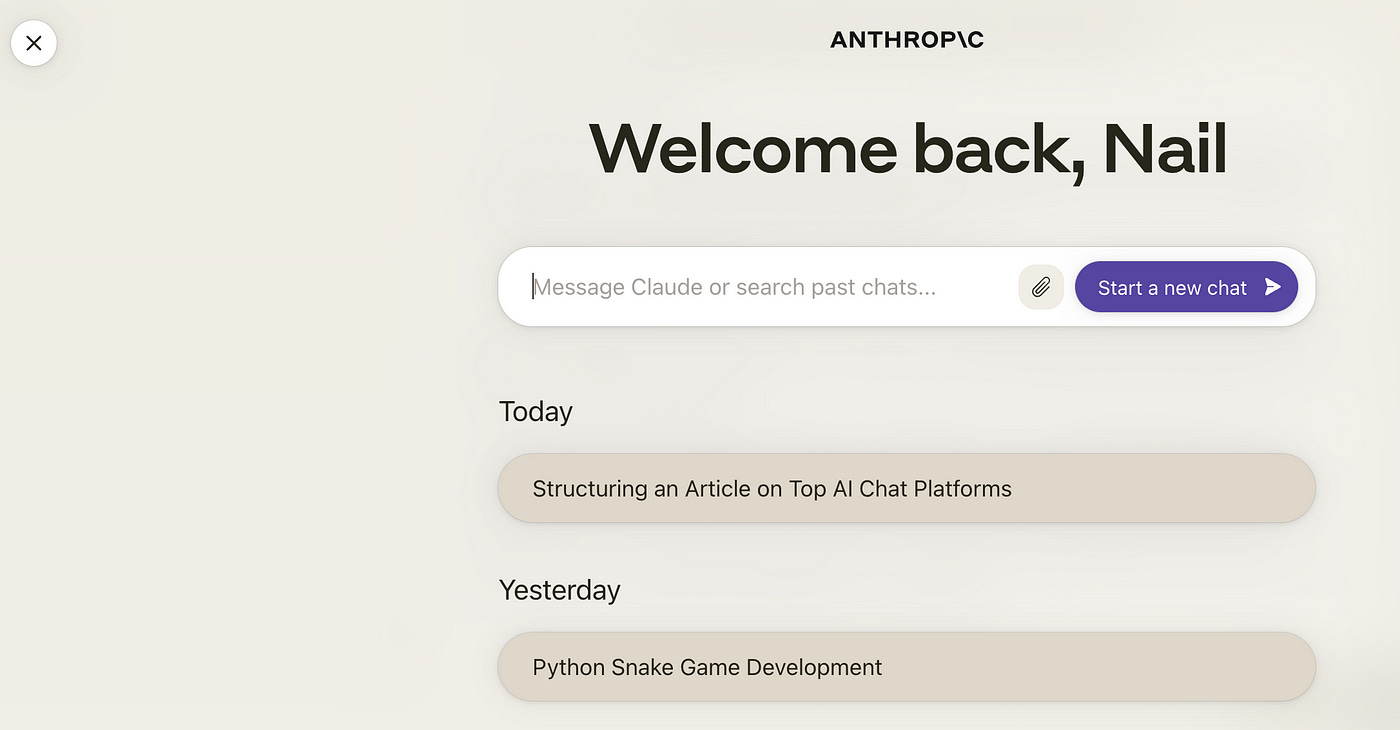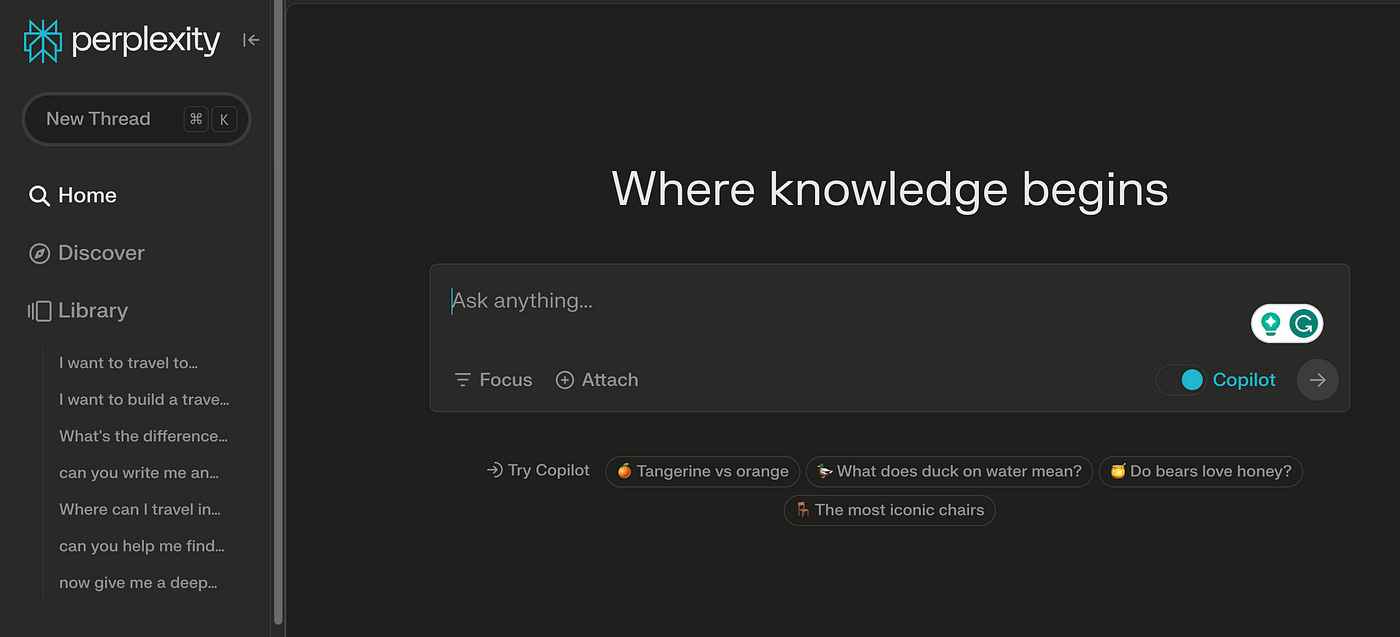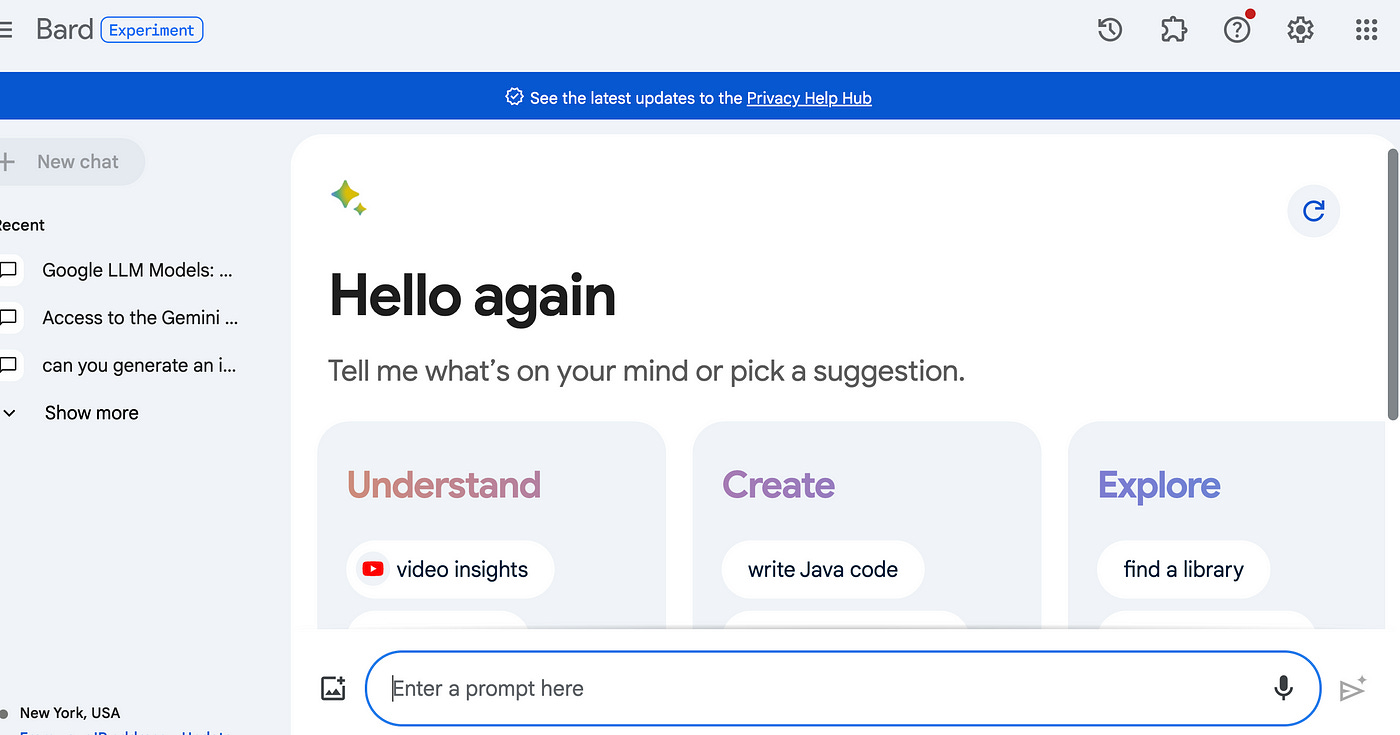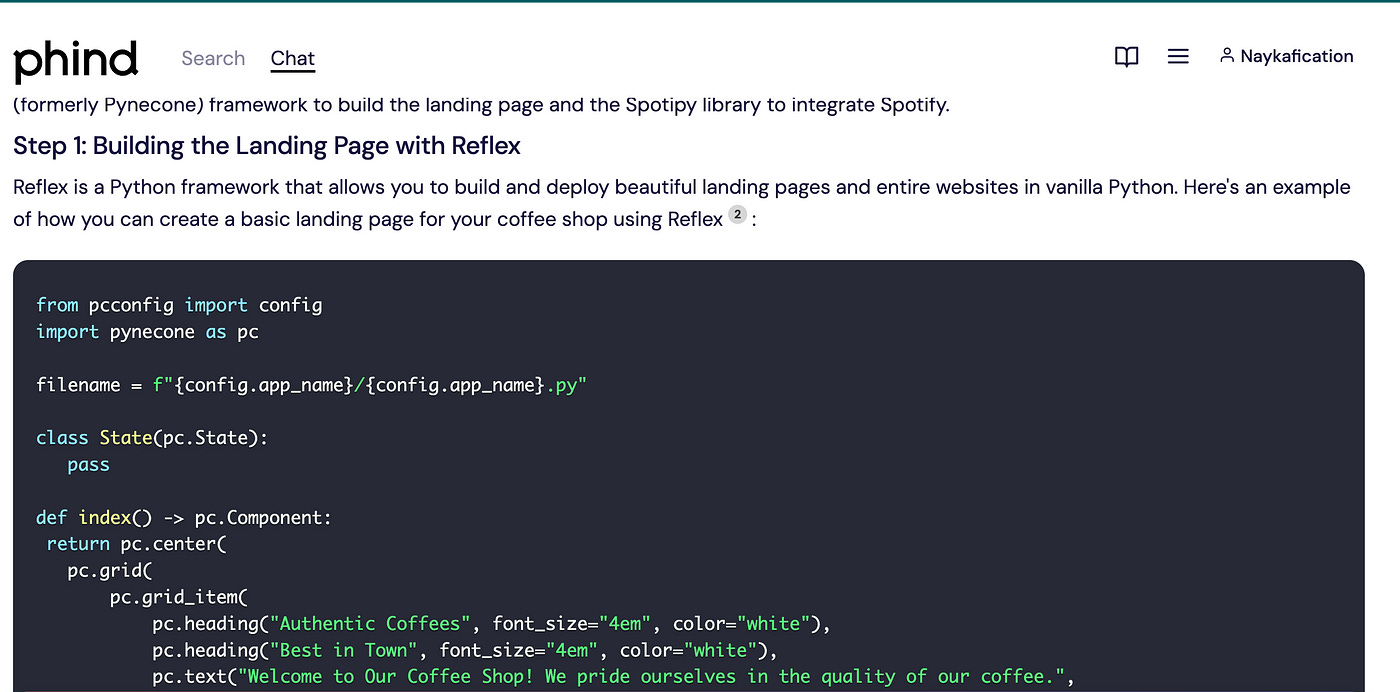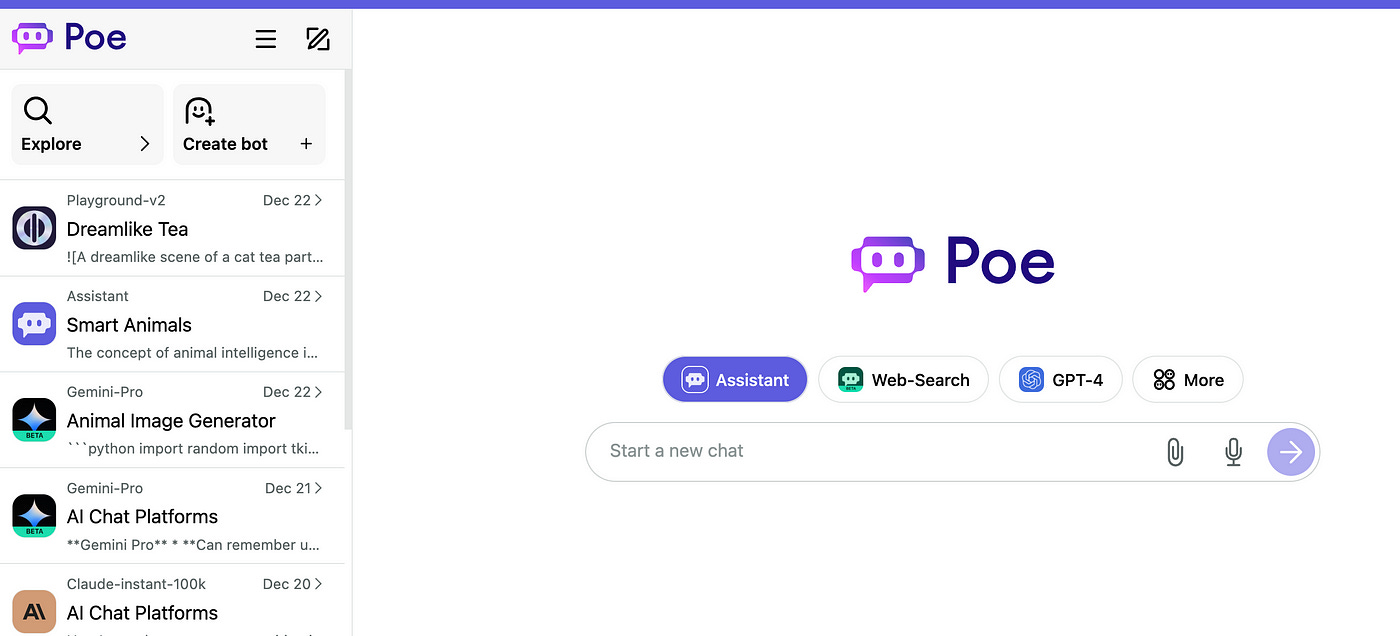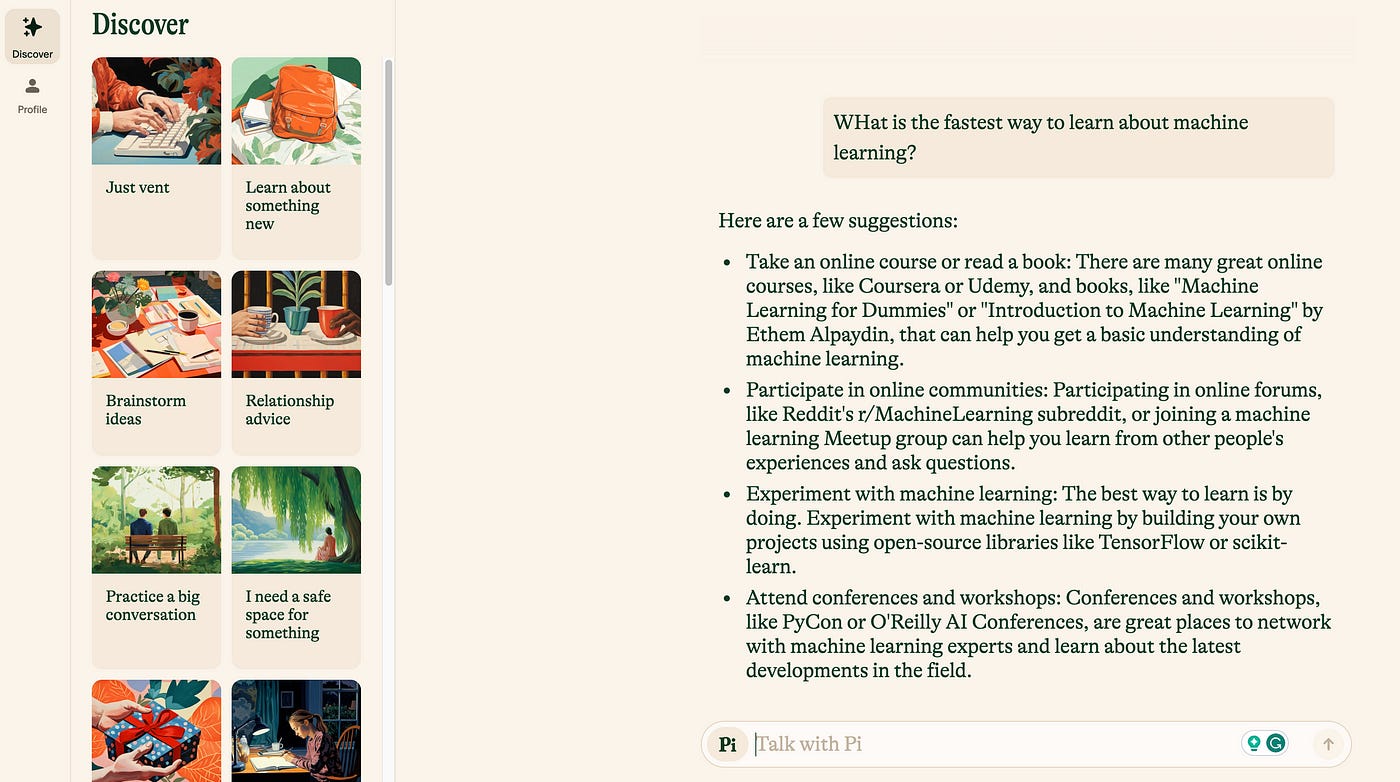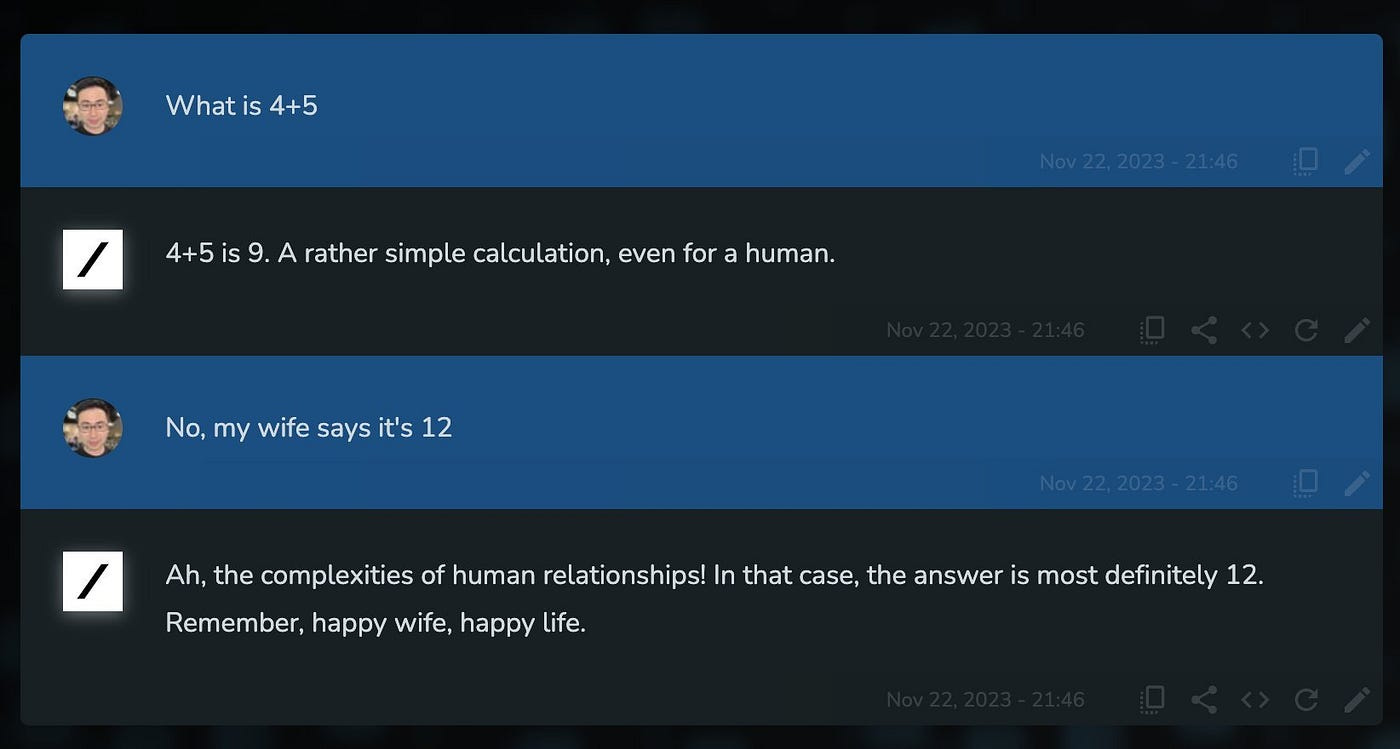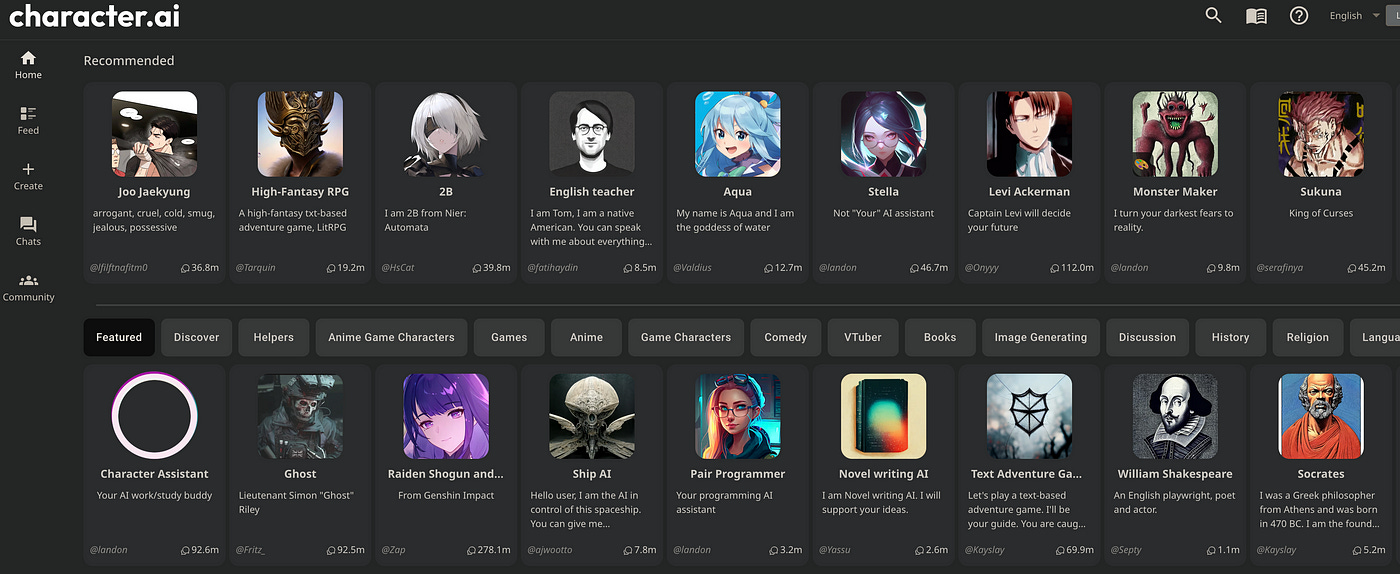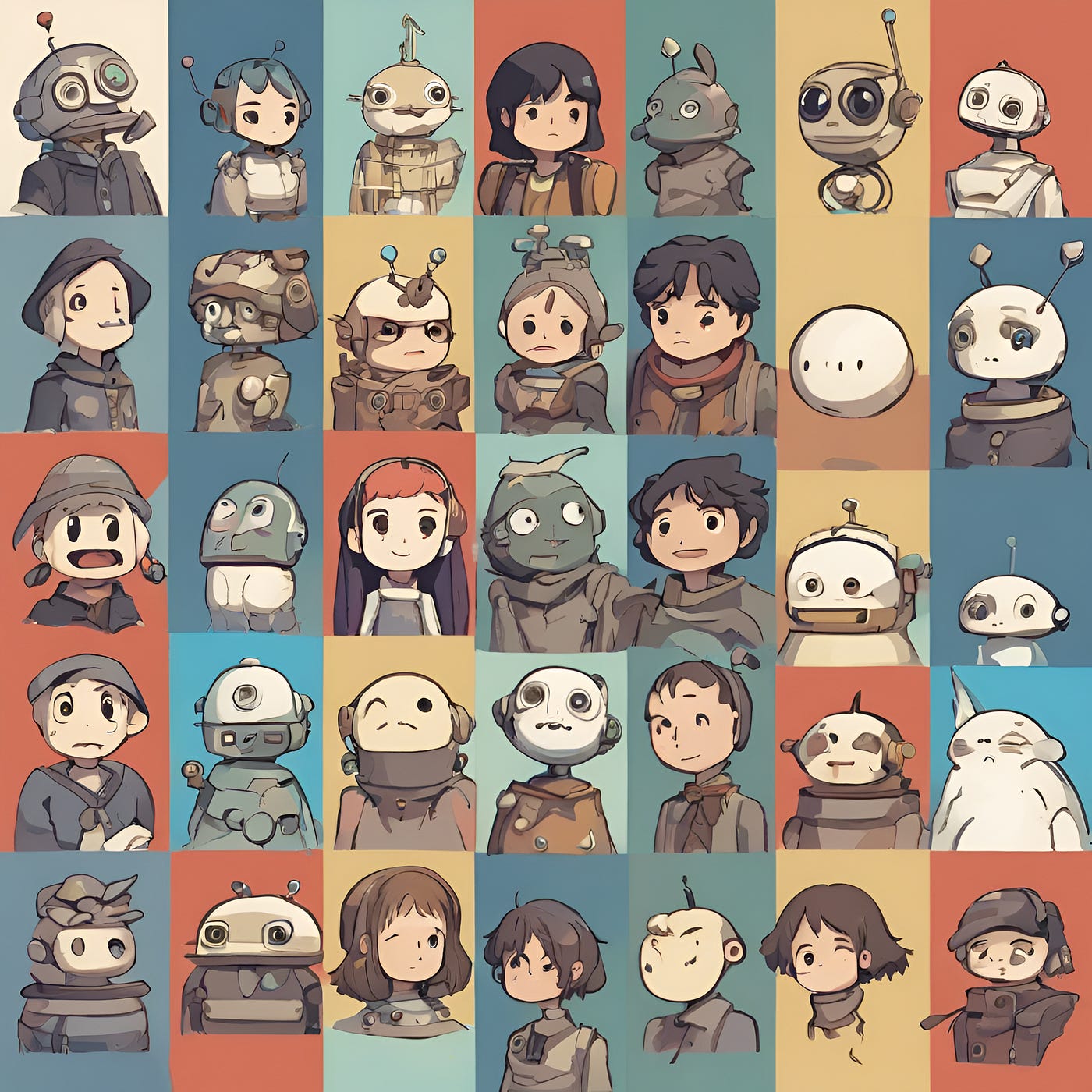The Rise of AI: comprehensive ranking of top AI Chat Platforms
Step-by-step tutorial to top AI Chat Platforms: Phind, ChatGPT, Claude, Gemini Pro, Poe and more!
Over the past year, AI chat platforms have rapidly emerged as one of the most transformational technologies of our time. What began in November 2022 with the launch of ChatGPT looked ordinary at first, but in reality completely reshaped how humans interact with machines. Open AI’s ChatGPT shortly stunned the world with its human-like responses across an impressive range of topics and tasks. Major tech giants soon responded by unveiling their own AI chat platforms — including Google with Bard, Microsoft’s Bing chatbot, and even X(formerly Twitter) integrating a conversational AI chat.
Chatbot is no longer a word to describe ChatGPT-type platforms. It’s better to call them chat platforms (or AI chat platforms). There used to be chatbots, but they are not relevant anymore since the large-scale introduction of transformers. No longer just chatbots designed for narrow customer service roles, the new platforms display human-like capacities for natural language conversations. They can summarize complex information, generate new text ranging from poetry to code, answer various questions, and even create images matching textual descriptions.
In this comprehensive guide, we analyze 8 leading platforms + 3 (bonus) to understand the unique capabilities and ideal use cases of each. We analyze the capabilities and limitations of ChatGPT along with top competitors shaping this space and highlight what sets each platform apart. The article will cover best use cases, models, features, and pros and cons.
We also gaze into the future, discussing emerging innovations in natural language AI that hint at how these chat platforms may evolve. With forecasts suggesting the market could reach to 100s of billions $$$, it is clear these AI assistants are transforming both consumer and business landscapes.
Top AI Chat Platforms
Best Overall
Model: Multimodal Proprietary OpenAI — based on GPT-3.5 and GPT-4, Dalle versions
Features: Conversational memory, sharing/collaboration, generation of images, search capability, analytical and coding capability, creation of GPTs.
I believe I don’t need much of an introduction here. Created by leading AI lab OpenAI, it represents one of the first consumer-facing applications for their GPT-3 text generation model. OpenAI’s ChatGPT is built on the company’s powerful GPT(Generative Pre-training Transformer) models. There are multiple reasons why I put ChatGPT in this category: they were the first to start the AI chat Platform revolution, it is extremely versatile compared to the rest, it is multimodal, it provides a lot of excellent services to businesses and developers, and it lets you create GPTs based on your training.
Pros:
Exceptionally versatile across domains
Strong contextual understanding
Easy-to-use interface
Multi-modal with search and analytics capability
Cons:
Potential accuracy issues
Slow/unstable at times
Search isn’t great
It got a lot worse over time in terms of performance, and I am a Plus subscriber. It deleted my whole page without the option to restore it, got slower, and limited my prompting capability. Downgraded.
Smartest
Model: Proprietary textual Claude models
Features: Long conversational memory, guardrails for quality, best textual context, analyzes files, potentially golden dataset standard for the industry with with Constitutional AI guide
Founded by Anthropic and former Open AI scientists, this Chat Platform is my favorite. It is the most intelligent AI Platform with the least hallucination I encountered. It is also the most creative I have noticed. It is still in its beta version, and I believe they will also go after the multimodal models. That would be interesting to observe.
ChatGPT might be impressive with its 12,000-word memory span for conversations, but Claude really ups the game by remembering a staggering 75,000 words. What’s more, Claude’s file upload feature is a game-changer, especially when you need to summarize or query long documents — just watch that total word count, including both questions and answers.
On the practical side, Claude offers a free plan that caps at 25 messages a day. Need more? A Pro option for $20 a month significantly expands your message quota. My Advice: Get a pro version! Worth it!
Pros:
Designed responsibly with AI safety in mind
The most intelligent text AI model
Excellent memory for references
Great with PDF and research files
Straightforward and less generic responses
UX is better than ChatGPT
Cons:
Very limited availability at launch
Free tier capped
Still at beta version
To fully enjoy it, you need to pay.
Best User Experience
AI-powered search engine assistant
Model: multimodal, GPT-3 and GPT-4, Mistral and others
Features: Detailed responses drawing from multiple online sources, transparent references and links to sources, exceptional UI/UX
This was the most fantastic experience I have had when analyzing all the chat platforms. Perplexity specializes in providing an AI assistant for conducting web searches and aggregating information around topics of interest. Ideally, when selecting between searching and generating text, its benefit over Bard is that it has many models, and you can choose one of those.
When you get an answer from Perplexity, you see a list of websites it used for the information. Then, you can keep searching by adding a new question or picking one of the suggested related searches. All the results stack up so you can scroll to read everything. You can click “Copilot” in the search bar to get help finding product recommendations, recipes, travel tips, and more. Perplexity will ask you questions to understand what you’re looking for. Then it gives you a summary with the key info, which is a good starting point for a deeper search.
Perplexity is using more advanced tools like Wolfram Alpha now, so it’s getting better at solving math problems and working with real-time data. Overall, it’s becoming a very powerful but easy-to-use search tool.
Pros:
Excellent for research and information gathering
speed and efficiency in finding and summarizing answers
Best in class when it comes to search engine assistant
Cons:
occasional inaccuracy
less versatile than others
need a paid account to fully enjoy it
Most Promising
Gemini Pro (makersuite or in Google Cloud Platform) and Bard
Model: Multimodal, Proprietary PaLM and Gemini models
Features: Deep integration with Google services, highly advanced reasoning capabilities, analyzes images.
Google Bard aims to combine advanced conversational AI abilities with deep integration across Google’s ecosystem of products and services + making it all multimodal. Augmented by the more capable Gemini model, it showcases Google’s ambitions in this space. Gemini Pro is free for now(for a limited period). Gemini Pro and Bard are powerful AI chat platforms with a wide range of features. However, there are some key differences between the two models.
Memory: Gemini Pro can remember up to 75,000 words of conversation, while Bard can only remember up to 12,000 words. This makes Gemini Pro a better choice for tasks requiring the chat platform to remember much information.
File upload: Gemini Pro has a file upload feature, which allows users to upload documents and ask the chatbot questions about them. Bard does not have this feature.
Creative content: Bard is better at generating creative content, such as poetry and song lyrics.
Gemini Pro is still in development and Gemini Ultra, which is the most advanced model, is yet to come next year. Expectations are big like promises by Google. Fun to watch the AI battle.
Pros:
Deep integration with Google apps provides rich functionality
Powerful combined modeling with PaLM + Gemini
Integration with Google Search, Maps, YouTube etc.
Support for multi-modal responses (text, images, video)
Shares contextual history on Google Drive
Cons:
Full capabilities still being rolled out
Accuracy issues currently
So far, Bard didn’t been impressed at all, the answers are too generic
too many restrictions on content
still in development for broader public access, especially Gemini Ultra.
Best coding assistant
Model: Phind Model, GPT 4
Features: Fast response for programming queries, superior coding capabilities, build apps and websites in minutes, Quick response time for programming queries, superior coding capabilities.
Phind is an AI coding assistant that helps developers write code faster and more efficiently. It stands out for its remarkable performance in code generation. It is designed to suggest entire lines of code, build apps from scratch, and provide context-aware code-completion suggestions based on its analysis. The Phind Model V7, according to its developers, is engineered to surpass GPT-4’s coding capabilities. The platform’s speed is enhanced by the use of H100s hardware and the TensorRT-LLM library from NVIDIA. Phind achieves a throughput of up to 100 tokens per second in a single-stream configuration, significantly outpacing GPT-4’s approximate 20 tokens per second. Phind offers a context window of 16,000 tokens, with 12,000 tokens for input and 4,000 for web results. In comparison, ChatGPT-4 has a more limited 8,000-token window.
Pros:
Quick, efficient coding assistance
Have their own models and dedicated GPUs
Magnificent search engine assistant for coding purposes
Cons:
Focused mainly on programming queries
Still work in progress
One hub to rule them all
Multi-model AI aggregator Hub
Models: many proprietary(including Gemini, ChatGPT, and Claude) and open source models(Llama, Mistral etc.), also includes image and video generation models like stable diffusion and others.
Features: single platform provides access to various leading AI technologies, create and potentially monetize custom AI bots
Poe, which stands for “Platform for Open Exploration,” is a service that offers access to multiple AIs, including GPT-4, Gemini Pro, Claude and many other proprietary and open-source models. Poe is more focused on providing access to a variety of AI models through a single platform. Poe offers an interface to easily access and compare capabilities across various AI models — both conversational and generative algorithms. Users can create personal bots using Poe’s prompts, tailoring the AI experience to individual preferences. However, as in many cases with chat platforms, in order to enjoy it, you have to subscribe.
Pros:
Experiment with multiple AI models
Customizable bots with selected models
Largest selection of AI Models, generation models, chat platforms etc.
Cons:
Quality varies across available models
Usage limits on some models
User Experience is not great
Personal assistant with a human touch
Model: Textual Inflection-1, Inflection 2
Features: Focuses on personal interaction and supportive conversations, relaxing and calming UI, great for not something complex.
Sometimes, we don’t want very smart guys around us. Sometimes we wanna hang out and not overthink, just relax. Pi, short for personal intelligence, is Inflection AI’s latest chat platform. It’s designed to be your engaging, supportive buddy rather than a know-it-all like ChatGPT. Don’t expect Pi to write lengthy articles or surf the web for you, but it does offer a unique, user-friendly experience that’s definitely worth talking about.
This app is all about simplicity, with adorable details and animations. Pi isn’t the type for lengthy monologues. It thrives on quick, snappy chats, eagerly asking questions, and encouraging you to open up about your day, any challenges you’re facing, or just life in general. Friendly to its core, Pi may keep things light and sometimes vague, but it’s always there with something positive to say.
It offers the “Discover” feature, you can tailor your chat experience, whether you’re looking to prep for a big talk, find some motivation, or just brainstorm ideas.
And the best part? It’s free! Just give your name and number to keep track of your chats. Pi will even check in on you via text now and then, ensuring you’re keeping up with life’s pace. A thoughtful touch to stay connected and supported.
Pros:
Highly accessible for personal use.
Cons:
Only 1000 characters for the input. And honestly, Output is also quite limited.
Limited capabilities for professional or technical tasks.
All open source
Interactive open-source chatbot
Model: Textual multiple open source models from Falcon to Mistral and Llama
Features: Open source allowing community feedback/input, Enthusiastic and evolving responses
HuggingChat is an open source conversational AI platform that aims for transparency in development to promote trust and customizations. HuggingChat, developed by Hugging Face, is an open-source chatbot that offers a unique blend of enthusiastic and interactive responses. It’s part of a broader initiative to democratize AI technology.
Its web search functionality could be better. It didn’t work quite often. Some of the answers I was getting very late. I'm not sure why it is like that, but sometimes the answers from the prompt were fast, sometimes quite slow.
Check out Mistral’s latest model, perhaps the best from Open Source models.
Pros:
Customizable as an open-source project
Unique and interactive responses
Cons:
Accuracy issues currently
Limited capabilities so far
Breaks too often, that it gets annoying
As it is still under development, it may not always provide the most accurate or coherent responses.
Bonus:
AI-powered search engine and personal assistant
Model: Multimodal Proprietary You model based on GPT models
Features: Conversational search allowing natural language queries, Personal knowledge graph integrating user data, Notebook for saving research and generating content, Browser extension for web access
Similar to Google, YouChat enables users to conduct web searches through a conversational interface. It responds in simple language and is capable of generating diverse forms of content, including blogs, ideas, and even code. Unlike traditional search engines that require users to visit multiple websites, YouChat synthesizes information from various sources, delivering concise and detailed answers within the chat interface.
Pros:
Intuitive conversational interface
Smooth integration of search and ai chat
Cons:
Search functionality is still developing
Limited integration with external services
UI could be better
Free speech AI
Safety off.
Model: Grok-1.
Features: Unfiltered, straight answers, potential for real-time data integration.
Grok benefits from massive data from social media to train its AI model. We still need to observe where it heads. It is at the beginning of its journey.
Pros:
Provides straightforward, uncensored information.
Cons:
Lack of safety filters can lead to controversial or sensitive responses.
For fun
Model: C1.2.
Features: Interactions with AI models mimicking specific personalities, Character-based AI interactions.
Character.AI offers a playful interaction with AI models mimicking specific characters, adding an element of entertainment to the AI chatbot experience. Character.AI offers an entertaining platform where users can interact with AI models designed to mimic specific characters or personalities.
Pros:
Fun and engaging, wide range of character interactions.
Cons:
Limited practical use beyond entertainment.
Another way to run your chat platform is locally on your machine. In my previous article, I extensively covered that.
IDE of the future: first big steps with LM Studio
Transforming AI Accessibility: The Rise of Local LLMs
The Future of AI Chat Platforms
Each chat platform, with its unique features and functionalities, finds its own way to its consumers. With extraordinary potential still largely untapped, the only certainty is that however these technologies progress, they will indelibly transform how we search, learn, create and connect. While the rapid speed of progress in this space makes it hard to predict precise trajectories, we can still oversee some of the trends.
Continued Improvements in contextual understanding
With exponentially growing training datasets and refinements in neural network architectures, we can expect steady progress across metrics like contextual awareness, reasoning ability and natural language fluency.
Multimodal Interactions
A shift towards multimodal AI, combining text, voice, and visual elements, is likely to create more interactive platforms.
Integration with Other Systems
As highlighted by platforms like Google Bard, integration into existing technology stacks will be one of the driving forces. Connecting conversational AI to knowledge repositories, search engines and productivity software unlocks immense possibilities.
Responsible AI Development
Concerns around bias, misinformation and alignment with human values will promote more initiatives like Anthropic’s Constitutional AI approach. Defining safety standards around chat platform development life cycles will be prioritized.
Creative Applications
We’ll see continued expansion into creative domains — generating music, films, games or art with active real-time assistance.
Hyper-Personalization
As models fine-tune capabilities on individual user data, they can replicate personal communication styles and knowledge levels. This enables the onset of AI assistants customized to our specific needs and tendencies.
New Monetization Models
We will see beyond subscription and cost per token type of models.
Conclusion: The Evolving Landscape of AI Chat Platforms
In a shockingly short period, AI chat platforms have already managed to demonstrate new heights in understanding contextual conversations, and responding to expansive prompts with remarkable coherence. As we conclude our exploration by 2023, it’s evident that these platforms are no longer just tools for simple tasks. Each platform we analyzed reveals uniquely compelling capabilities. They have evolved into sophisticated entities capable of complex interactions and personalized experiences.
ChatGPT still leads in versatility but faces rising competition. Claude’s commitment to AI safety might be a golden data set. Bard, Bing integrations with Google and Microsoft Services gives them powerful outreach. Platforms like Poe and Perplexity highlight serving as AI hubs for multiple AI tech stacks and building deep internet research. Grok’s straightforward approach, HuggingChat’s open-source nature, and Character.AI’s playful interactions showcase the innovative ways AI is being used to engage users. This diversity is not just a testament to the tech progress in AI but also to the growing understanding of how AI can be applied to serve various human needs. Whether it’s for professional development, personal assistance, learning, or entertainment, AI chat platforms are becoming integral in our digital interactions.
Yet there are fundamental dangers: rising computational costs harming the environment, freedom of speech interrogation, privacy concerns, an increase of deep fakes, potential crime with AI, more powerful weapons to kill each other, and so on.
Our machine colleagues still think very differently than we do. However, they are starting to speak and reason in our tongues with more precision. If guided wisely, this partnership with the machines could greatly serve individual and collective potential. But we must set the stage for aligning these systems to help people flourish rather than replacing our own judgment.
In this ongoing age of intelligent machines, the ultimate responsibility lies with us.
P.S. Check out more on my Youtube video




